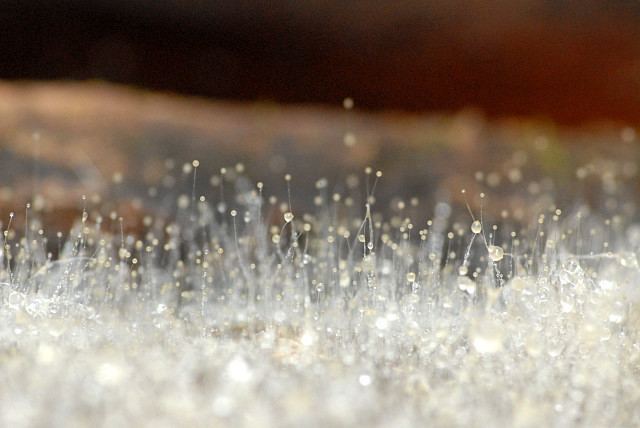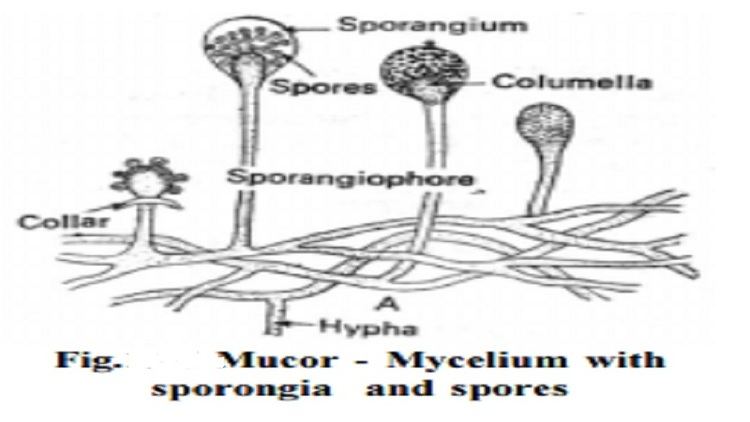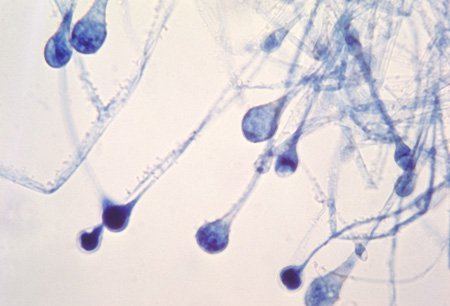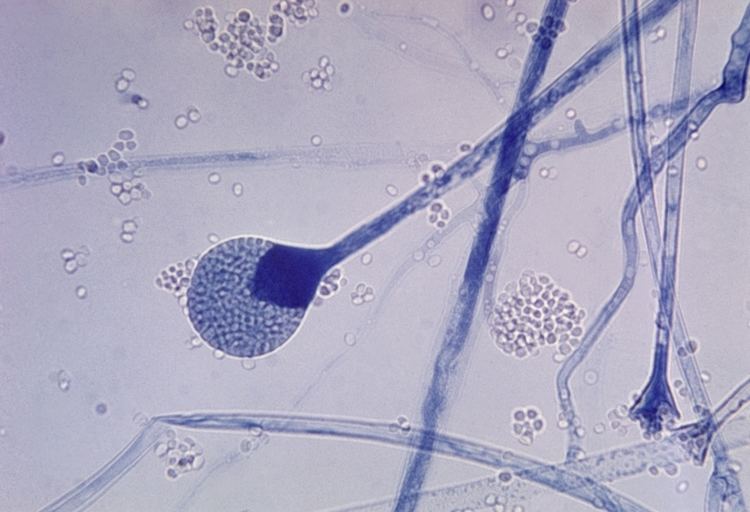Kingdom Fungi Order Mucorales Scientific name Mucor Rank Genus | Family Mucoraceae Higher classification Mucoraceae | |
 | ||
Lower classifications Mucor mucedo, Mucor racemosus, Mucor hiemalis | ||
Mucor and mucormycosis
Mucor is a microbial genus of approximately 6 species of moulds commonly found in soil, digestive systems, plant surfaces, rotten vegetable matter and iron oxide residue in the biosorption process.
Contents
- Mucor and mucormycosis
- Fungi zygomycota mucor life cycle
- Description
- Reproduction
- Clinical significance
- Species
- References

Fungi zygomycota mucor life cycle
Description
Colonies of this fungal genus are typically coloured white to beige or grey and are fast-growing. Colonies on culture medium may grow to several centimetres in height. Older colonies become grey to brown in colour due to the development of spores.

Mucor spores or sporangiospores can be simple or branched and form apical, globular sporangia that are supported and elevated by a column-shaped columella. They form mold with irregular non-septate hyphae branching at wide angles (>90°).
Reproduction

Mucor mucedo (genus species) uses asexual reproduction. When erect hyphal sporangiophores are formed.The tip of the sporangiophore swells to form a globose sporangium that contains uninucleate, haploid sporangiospores. An extension of the sporangiophore called the columella protrudes into the sporangium. The sporangium walls are easily ruptured to release the spores, which germinate readily to form a new mycelium on appropriate substrates.

During sexual reproduction, compatible strains form short, specialized hyphae called gametangia. At the point where two complementary gametangia fuse, a thick-walled, spherical zygosporangium develops. The zygosporangium typically contains a single zygospore. Nuclear karyogamy and meiosis (sexual recombination) occur within the zygospores, which are thought to be long-lived and resistant to adverse conditions. They may germinate to form hyphae or a sporangium. Mucor includes both homothallic (self-compatible) and heterothallic species.
Clinical significance

Most species of 'Mucor' are unable to infect humans and endothermic animals due to their inability to grow in warm environments close to 37 degrees.Thermotolerant species such as Mucor indicus sometimes cause opportunistic, and often rapidly spreading, necrotizing infections known as zygomycosis.
